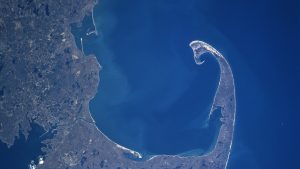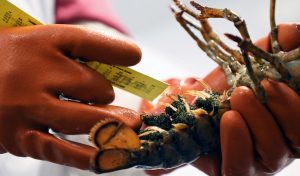Search results for: Call%201800-299-7264%20To%20Book%20%20United%20Airlines%20Basic%20Economy
Development and testing of a near real-time white shark forecast system for Cape Cod, Massachusetts
Development and testing of a near real-time white shark forecast system for Cape Cod, Massachusetts Principal Investigators Megan Winton, Atlantic White Shark Conservancy Greg Skomal, Massachusetts Division of Marine Fisheries Summary The PIs will develop and evaluate near real-time ‘shark forecast’ maps that can be disseminated by town and beach managers and via the AWSC’s…
Read MoreHypoxia In Southern Cape Cod Bay
Modeling Unprecedented Low Dissolved Oxygen (Hypoxia) in Southern Cape Cod Bay Principal Investigators Malcolm Scully, Woods Hole Oceanographic Institution Rocky Geyer, Woods Hole Oceanographic Institution Abstract Unprecedented bottom hypoxia has developed in southern Cape Cod Bay in two consecutive summers. The causes of this low oxygen water are not well understood, and represent a significant economic and…
Read MoreA Watershed-Scale Analysis of Nitrogen Loading from Cranberry Agriculture in the Weweantic Watershed of Southeastern Massachusetts
A Watershed-Scale Analysis of Nitrogen Loading from Cranberry Agriculture in the Weweantic Watershed of Southeastern Massachusetts Principal Investigator Christopher Neill, Woods Hole Research Center Co-Principal Investigators Casey Kennedy, USDA Rachel Jakuba, Buzzards Bay Coalition Summary Cranberry bogs make up an important part of the landscape and cultural heritage of southeastern Massachusetts. Accurate estimates of nutrient…
Read MoreWHOI Sea Grant to Map Potential Path of Proposed Wastewater Release from Pilgrim Nuclear Power Station
[May 17, 2023] — Woods Hole Oceanographic Institution (WHOI) Sea Grant has been recommended for rapid response funding from the National Oceanic and Atmospheric Administration (NOAA) Sea Grant Program to study the pathways of circulation in Cape Cod Bay. This study is designed to shed light on the possible fate of 1.1 million gallons of…
Read MoreRhythmic Beach Cusp Formation: A Conceptual Synthesis
Rhythmic Beach Cusp Formation: A Conceptual Synthesis Seymour, R.J. and D.G. Aubrey Marine Geology, Vol. 65, pp. 289-302, 1985 WHOI-R-85-017
Read MoreBarnacle Biofouling On Oyster Farms
Barnacle biofouling on oyster farms: Species-specific seasonal timing and population connectivity Principal Investigators Jesús Pineda, Woods Hole Oceanographic Institution Carolyn Tepolt, Woods Hole Oceanographic Institution Jane Weinstock, graduate student, Woods Hole Oceanographic Institution Abstract Shellfish aquaculture, the practice of farming aquatic animals, is a major industry in Massachusetts and on Cape Cod, but biofouling by…
Read MoreOcean Science: Its Place in the New Order of the Oceans
Ocean Science: Its Place in the New Order of the Oceans Ross, D.A. The New Order of the Oceans, pp. 65-84, 1986 WHOI-R-86-011
Read MoreHelping Communities Lower the Cost of Flood Insurance
Helping Communities Lower the Cost of Flood Insurance March 2018 — Three years ago, Woods Hole Sea Grant and its outreach partner the Cape Cod Cooperative Extension developed a first-of-its-kind program for coordinating regional flood insurance and promoting flood resilience in coastal communities. That program is now serving as a model for others across the…
Read MoreResearch into American Lobster Reproduction
A New Interactive StoryMap Highlights Projects from the Sea Grant American Lobster Initiative A new web-based StoryMap highlights research being conducted by scientists into the reproduction of the American lobster. The scientific studies and the work to communicate about them are part of the American Lobster Initiative of the National Oceanic and Atmospheric Administration’s National…
Read MoreUpdate on River Herring Network
Update on River Herring Network Dec. 2017 — Each spring river herring come from the ocean and swim, or “run” up rivers to spawn in ponds and slow sections of rivers. Each fall, Massachusetts river herring wardens gather together to talk about their favorite fish and discuss ways to preserve it. For centuries, people used…
Read More

